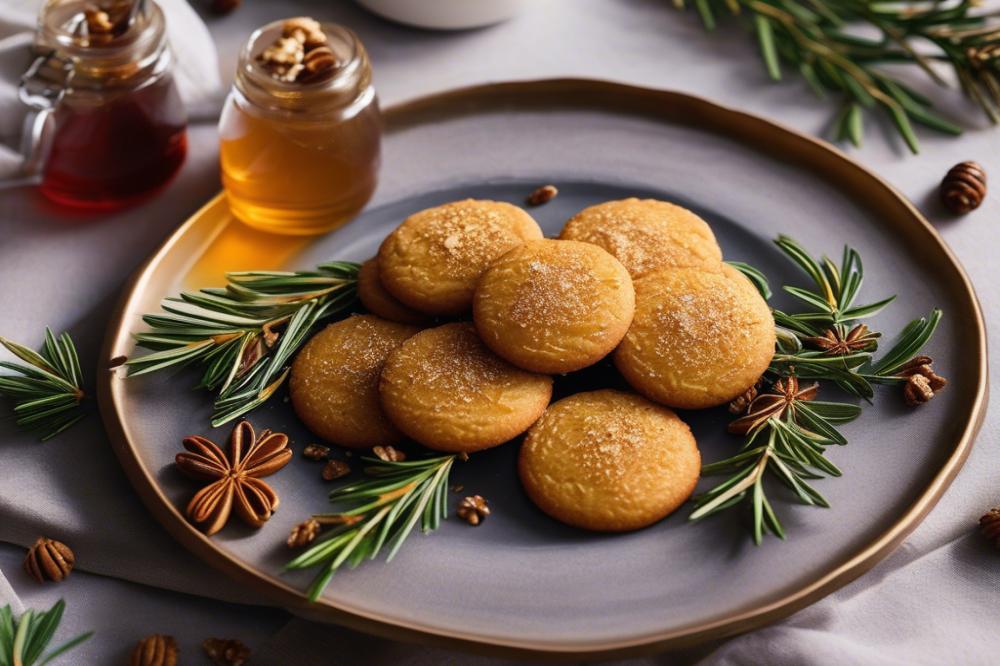Exploring melomakarona: A Greek Delight
melomakarona are beloved traditional Greek sweets that hold a special place in Mediterranean cuisine. These delightful cookies are particularly cherished during festive occasions, like Christmas. Many families make them each year, following a traditional recipe passed down through generations. The act of baking these holiday cookies often brings loved ones together in the kitchen, enveloping the space with sweet aromas that awaken fond memories.
During Greek Christmas celebrations, melomakarona take center stage at dessert tables. Their rich flavor and unique texture make them a favorite among guests. The combination of walnuts, honey syrup, and cinnamon creates a synergy of tastes that embraces the essence of the holiday spirit. Many enjoy them not just for their sweetness, but also for the warmth they bring to family gatherings.
This dessert is more than just a treat; it symbolizes festivity, love, and sharing. In Greece, offering these Greek honey cookies to guests is a cherished tradition. People often prepare large batches, ensuring there is plenty to go around. Sharing melomakarona is a heartfelt gesture, embodying the joy of the season.
As each cookie is dipped in fragrant honey syrup and sprinkled with crushed walnuts, it becomes a testament to the creativity and care of the baker. The technique requires skill, but the results are always rewarding. Making these cookies enriches the home with not just flavors but also stories and laughter, making them a staple for many during this special time of year.
Understanding Melomakarona
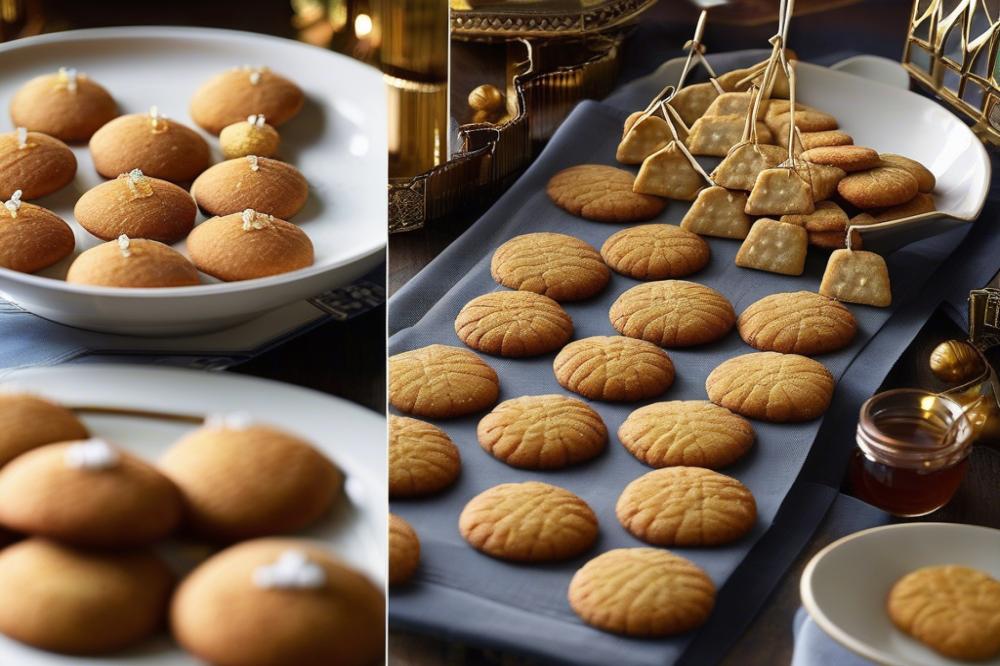
Melomakarona are cherished holiday cookies in Greek culture, especially during Christmas. Their origins trace back to ancient Greece. Initially, these sweets were created to honor the dead as part of a ritual. Over time, they evolved into a festive treat celebrated during holiday gatherings, linking the past and present.
During Greek Christmas, families gather to bake these cookies, filling homes with delightful aromas. Each household may have its own traditional recipe, handed down through generations. Community and family bonds strengthen while mixing ingredients like flour, olive oil, and spices.
Incorporating nuts, especially walnuts, adds a crunchy texture to the cookies. While baking, the flavors of cinnamon and cloves fill the air. After cooking, they soak in honey syrup, giving them a beautiful glaze and sweetness. This method highlights the Mediterranean cuisine’s emphasis on natural ingredients, creating a treat that reflects the region’s flavors.
Melomakarona embody the spirit of Greek sweets, celebrated for their rich taste and texture. Each bite offers a taste of tradition, connecting people to their roots. They are not just snacks but a symbol of joy and celebration, often served alongside other festive desserts during the holiday season.
Whether enjoyed at home or shared with friends, these holiday cookies carry deep meaning. The preparation and sharing of melomakarona inspire feelings of warmth and unity. As families enjoy these treats, they celebrate not only the holiday but also their heritage.
Ingredients and Instructions
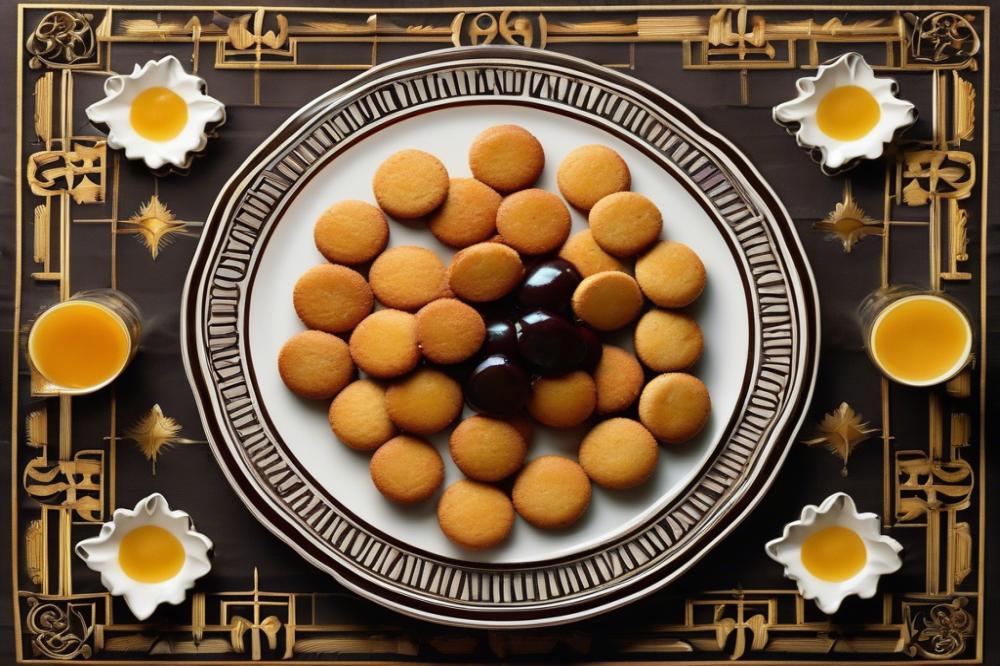
To make these delightful Greek sweets, it’s essential to gather the right ingredients. Below is a list of what you will need:
- 4 cups all-purpose flour
- 1 cup extra virgin olive oil
- 1 cup sugar
- 1 cup fresh orange juice
- 1 tablespoon grated orange zest
- 1 teaspoon baking powder
- 1 teaspoon ground cinnamon
- 1/2 cup finely chopped walnuts
- 1/2 cup honey
- 1/4 cup water
- 1/2 cup chopped walnuts for topping
- Ground cinnamon for dusting
With your ingredients ready, it’s time to start baking. Follow these step-by-step instructions to create these traditional holiday cookies:
Making the Dough
Begin by mixing the olive oil and sugar in a large bowl. Blend until they become light and fluffy, which should take about 3-5 minutes. Next, incorporate the orange juice and zest into the mixture. Stir well to combine. In a separate bowl, whisk together the flour, baking powder, and ground cinnamon.
Slowly add the dry ingredients to the wet mixture. Mix gently using your hands or a spatula until a soft dough forms. Do not overwork the dough; it should remain tender. Once everything is combined, fold in the chopped walnuts. The dough is now ready to be shaped.
Shaping the Cookies
Take small pieces of dough—about the size of a walnut—and roll each piece into an oval shape in your palms. Place the shaped cookies onto a lightly greased or parchment-lined baking tray. Leave some space between each cookie, as they will expand during baking.
Preheat the oven to 350°F (175°C). Bake the cookies for about 25-30 minutes, or until they are golden. Keep a close eye on them towards the end to avoid burning. Once they are done, remove them from the oven and let them cool on a wire rack.
Preparing the Honey Syrup
While the cookies are cooling, prepare the honey syrup. In a small saucepan, combine honey and water. Bring the mixture to a gentle simmer. Allow it to simmer for about 5 minutes, stirring occasionally. Remove the syrup from heat and set it aside to cool slightly.
Finishing Touches
Once the cookies have cooled, dip each one in the syrup for a few seconds. Make sure they are well-coated. Afterward, place the cookies on a serving platter. Sprinkle chopped walnuts on top and dust with ground cinnamon. These festive desserts will surely charm anyone who tastes them.
Nutritional Information
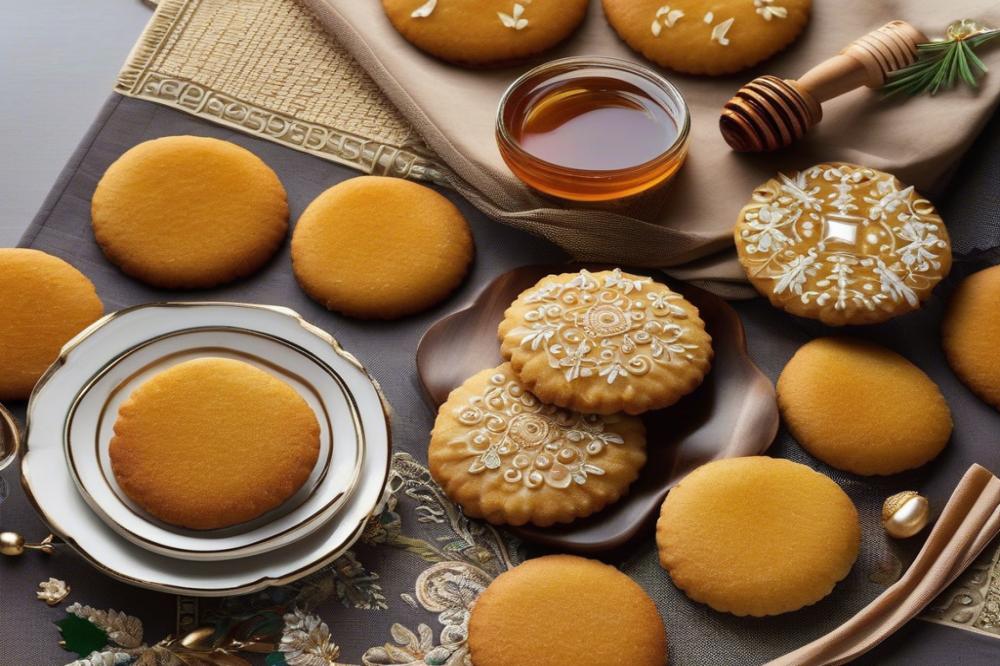
The nutritional profile of melomakarona highlights the benefits of the main ingredients used in this traditional recipe. These Greek sweets are not only delicious but also pack various nutrients. A closer look reveals how each component contributes to the overall healthiness of these holiday cookies.
Olive oil serves as a key ingredient in many Mediterranean cuisine dishes, including melomakarona. Each tablespoon contains about 120 calories and 14 grams of fat, primarily healthy monounsaturated fats. This type of fat can support heart health by lowering bad cholesterol levels. It also offers antioxidant properties, assisting in preventing inflammation.
Flour is another primary ingredient, providing a significant amount of carbohydrates. One cup of all-purpose flour has roughly 455 calories and 95 grams of carbohydrates. While flour does not contain a lot of fiber on its own, it is an important energy source. Choosing whole wheat flour can increase dietary fiber, promoting good digestion.
Honey syrup is used to soak the cookies, adding sweetness and flavor. A tablespoon of honey has about 64 calories and 17 grams of carbohydrates. Honey contains antioxidants and has antibacterial properties. It can boost energy levels without causing a rapid spike in blood sugar compared to refined sugars.
In this recipe, walnuts are crucial. They are packed with nutrients and healthy fats. A quarter cup of walnuts has around 196 calories, 20 grams of fat, and 5 grams of protein. Rich in omega-3 fatty acids, walnuts can help reduce inflammation and support brain health. They also provide a good amount of fiber, aiding in digestive health.
Cinnamon, while used in modest amounts, offers its own benefits. One teaspoon contains only 6 calories but is known for its anti-inflammatory and antioxidant effects. Cinnamon may help regulate blood sugar levels, making it a smart addition to festive desserts.
The mixture of these ingredients creates a balance of macronutrients. Carbs for energy, fats for heart health, and protein for muscle repair unite harmoniously. Each bite of these cookies is a combination of flavor and nourishment, perfect for the holiday season.
Variations of Melomakarona
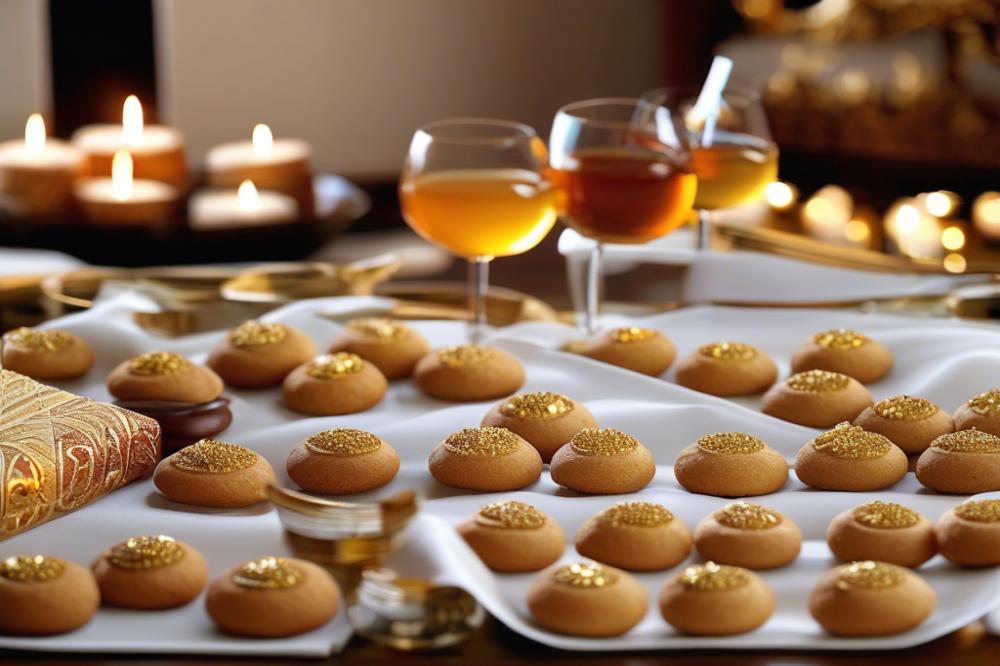
Many regions in Greece boast their own take on this classic cookie. Each area brings unique local ingredients to the recipe. Some places prefer using crushed almonds instead of walnuts. The result is a different texture and flavor, appealing to various tastes.
Greek communities worldwide also adapt these holiday cookies to match local ingredients. In countries like Australia and the United States, bakers might use maple syrup as a sweetener. The substitution can change the flavor profile significantly while still maintaining a hint of tradition.
Spices play a crucial role in these variations. While cinnamon is a staple, some recipes incorporate cloves or nutmeg for added warmth. Others might use vanilla extract to enhance the sweetness of the baked goods. Each spice choice adds a distinct character to the cookies.
Another common twist involves the type of honey syrup used. In Crete, locals often choose thyme honey, which has a more robust flavor. This choice can make the cookies more aromatic. Those in northern Greece may prefer lighter honey varieties, which create a different sweetness experience when drizzled over the warm cookies.
Some bakers also experiment with icing or toppings. A sprinkle of sesame seeds can provide a pleasing crunch. Drizzling melted chocolate on top is another way to give the cookies an exciting touch. These adaptations showcase creativity while honoring the essence of these Mediterranean sweets.
During festive seasons, many families create their own distinctive recipes. Grandma might add an unexpected ingredient that becomes a beloved tradition. These variations help pass down customs through generations, ensuring that the holiday spirit remains alive.
As you explore these different takes, consider how each one reflects the local culture. The heart of melomakarona lies in its adaptability. Each bite can tell a story of the region and its people, making these treats much more than just culinary delights.
Serving Suggestions and Pairings
Serving melomakarona during holiday gatherings creates a welcoming atmosphere. These traditional cookies shine brightly on any festive table. Their rich flavor of honey syrup and warmth from cinnamon makes them a hit. Consider a beautiful platter where these Greek sweets are displayed alongside other holiday cookies.
Pairing beverages can enhance the experience of enjoying these treats. A hot cup of spiced tea complements the spices in melomakarona perfectly. If you prefer coffee, opt for a dark roast to contrast with the sweetness of the honey. For something different, serve a light red wine. Its fruity notes will balance the cookie’s flavors beautifully.
Adding other festive desserts also adds variety to your holiday spread. Baklava, another classic from Mediterranean cuisine, could share the table with the cookies. Its layers of pastry and honey create an irresistible combination. A fruit salad with pomegranate seeds can bring a fresh twist, offering a balance to the sweetness.
Consider garnishing the cookies with crushed walnuts. This not only enhances their flavor but also provides a delightful crunch. If you’re feeling creative, offer a drizzle of extra honey on the side. Guests can add it according to their taste.
When baking melomakarona, remember that presentation matters. Dusting the cookies with powdered sugar or adding a sprinkle of cinnamon elevates their look. Small details can transform them into a memorable treat at any gathering.
Experimenting with different pairings will create a unique experience for your guests. They’ll remember the warmth of the cookies and the charm of the holiday gathering. With thoughtful planning, your celebration will be one filled with joy and delicious flavors.
Embracing Tradition Through Melomakarona
Melomakarona hold a cherished place in Greek culture and cuisine. These delightful honey cookies are more than just a dessert; they symbolize family gatherings and joyful celebrations. Often baked during the holiday season, they bring warmth and sweetness to festive occasions. Each bite offers a taste of tradition, connecting generations through shared recipes and memories.
Cooking these cookies is an act of love. The traditional recipe reflects the patience and care that goes into preparing them. Ingredients like olive oil, walnuts, and aromatic spices tell the story of Greek culinary heritage. As you craft these treats, you’ll find joy not only in the preparation but also in the delicious reward awaiting you.
Baking melomakarona at home can be a fulfilling experience. It invites creativity and encourages kitchen exploration. Family and friends will appreciate the effort as they enjoy these traditional Greek sweets. Sharing them creates bonds that extend beyond the table. Each cookie becomes a gesture of kindness and festivity.
Trying your hand at this recipe is highly encouraged. It can transform your holiday season into something special. As you follow the steps and watch the cookies come to life, you are participating in a timeless practice. Let this holiday season be about embracing culture, heritage, and sweet experiences. Your kitchen might just become a place of celebration this year!

